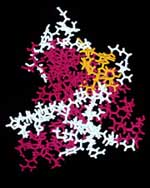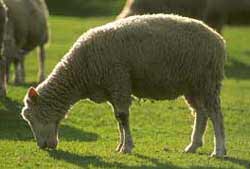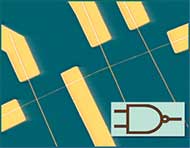Latest News

Gene may fend off prions
A gene may protect people against variant Creutzfeldt-Jakob disease.
People who lack a gene involved in immune responses may be three times more likely to suffer from variant Creutzfeldt-Jakob disease (vCJD), a new study suggests1. The result, if borne out in larger studies, could point researchers toward therapies for the incurable brain disease.
vCJD is thought to occur when people are exposed to misshapen prion proteins from cows with bovine spongiform encephalopathy – B

Study Shows Sheep Have Keen Memory for Faces
You would be forgiven for underestimating the intelligence of sheep, considering that their daily activities revolve around grazing. But research reported in the current issue of Nature indicates that, in fact, sheep possess more smarts than previously thought.
Keith Kendrick and colleagues at the Babraham Institute in Cambridge, England, investigated the sheep’s ability to distinguish and remember faces of both other sheep and humans. Presenting 20 sheep with pictures of 25 pairs of sheep

A little logic goes a long way
Ultra-minaturized electrical components could shrink supercomputers.
Researchers in the Netherlands and the United States have constructed simple computer circuits with electrical components many times smaller than those on commercial silicon chips 1 , 2 . These ultra-minaturized logic circuits hold out the prospect of hand-held computers as powerful as today’s state-of-the-art supercomputers.
Cees Dekker and co-workers at the Delft University

Ancient Bone Tools Suggest Modern Human Behavior Has African Roots
It’s an enduring enigma in paleoanthropology: when and where did modern human behavior arise? The fossil record suggests that anatomically modern humans appeared in Africa sometime between 150,000 and 100,000 years ago. Yet the earliest convincing indications of behavioral modernity in our species, archaeologists have argued, date to tens of thousands of years later and have turned up in Europe, not Africa. With that in mind, some theorists posited that modern behavior blossomed late and rather sudd

New angle on vision
Our brains use angular measurements to decide how far away objects are.
Even if trigonometry wasn’t your strong suit in school, your brain uses it constantly. You judge distance by measuring the angle between the ground and your line of sight to an object, a new study shows. The finding could improve the design of robots and artificial vision systems 1 .
Volunteers who looked through prisms that increased this angle thought objects were closer than they reall

Clean sheet for paper making
New catalyst means greener paper is not pulp fiction.
Pollution from paper production could be cut, say US chemists, with a new way of refining wood pulp 1 . But the process must go through the mill before it can convert industry.
During paper production, gluey wood component lignin is stripped out to leave stringy cellulose. The harsh chemicals used create environmental pollutants, such as toxic and long-lasting chlorinated compounds.
A new chemical











